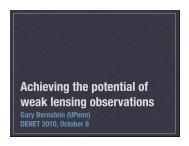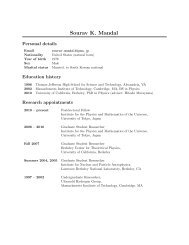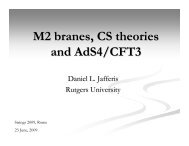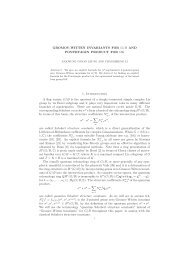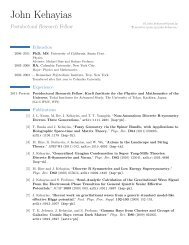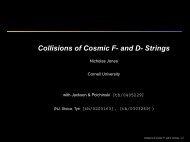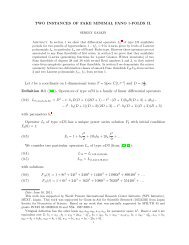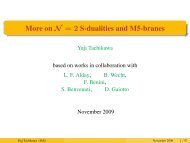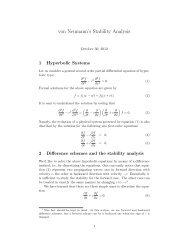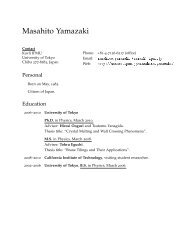STUDY SUMMARY - IPMU
STUDY SUMMARY - IPMU
STUDY SUMMARY - IPMU
You also want an ePaper? Increase the reach of your titles
YUMPU automatically turns print PDFs into web optimized ePapers that Google loves.
<strong>SUMMARY</strong> REPORT<br />
WIDE FIELD FIBER-FED OPTICAL<br />
MULTI-OBJECT SPECTROMETER (WFMOS)<br />
The WFMOS surveys demand a large multiplex gain and large wavelength coverage. This,<br />
combined with the 8.2-m Subaru aperture, demands a very large A-omega, the product of the<br />
area of the light beam and its solid angle as measured at the detector. The A-omega of an instrument<br />
is an important figure of merit, defining both the information-gathering power and the difficulty<br />
of the optical design and, hence, its cost. A-omega for WFMOS is an order of magnitude<br />
larger than that of current large-survey MOS systems (2dF, AAOmega and SDSS) and comparable<br />
to that of the multi-IFU MUSE for the VLT.<br />
We have been able to obtain the required A-omega with three spectrographs that have f/1.07<br />
cameras and CCD detectors of 93 mm × 93 mm. We are proposing to use custom CCDs from<br />
LBL. The proposed design (see Figures 3.12-1 and 3.12-2) uses Schmidt optics and meets all<br />
survey requirements. It has a large beam diameter (500 mm) to minimize the central obstruction<br />
losses, give high spectral resolution (as required by the GAHR survey) and keep the field angles<br />
within the camera within sensible limits to maintain good image quality. Schmidt optics is the<br />
most cost-effective approach, providing the greatest A-omega per dollar. In our design, Volume<br />
Phase Holographic Gratings (VPHGs) are used in transmission mode to maximize throughput<br />
and versatility. Our design allows spectral resolutions of up to R ~30000.<br />
46



